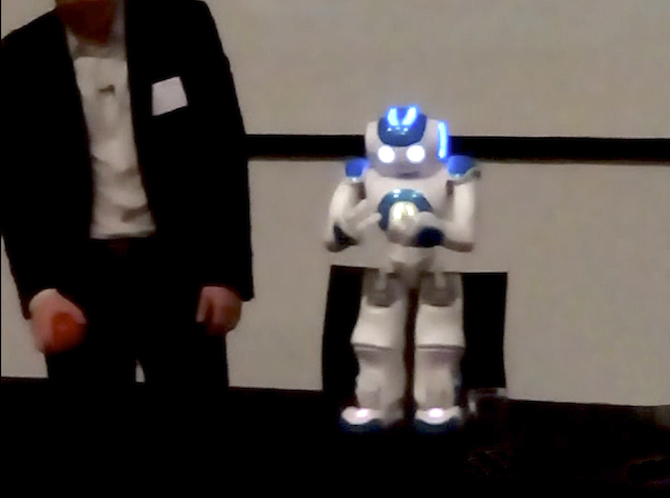Search
To search for an exact match, type the word or phrase you want in quotation marks.
A*DESK has been offering since 2002 contents about criticism and contemporary art. A*DESK has become consolidated thanks to all those who have believed in the project, all those who have followed us, debating, participating and collaborating. Many people have collaborated with A*DESK, and continue to do so. Their efforts, knowledge and belief in the project are what make it grow internationally. At A*DESK we have also generated work for over one hundred professionals in culture, from small collaborations with reviews and classes, to more prolonged and intense collaborations.
At A*DESK we believe in the need for free and universal access to culture and knowledge. We want to carry on being independent, remaining open to more ideas and opinions. If you believe in A*DESK, we need your backing to be able to continue. You can now participate in the project by supporting it. You can choose how much you want to contribute to the project.
You can decide how much you want to bring to the project.

During the day of talks “Human Interactive”, recently organised by Goldsmiths University in London, considering human relations with technology, the keynote presentation fell to the research director of a robotics company, who showed two of the robots that they are developing and producing to help people in their daily lives: “Humanoid Robots for All”.
Nao, 57 cm tall, designed to be a future mass consumer product, seems to be a child’s delight, as thanks to him they are capable of entertaining themselves on their own, as well as for older people with some form of functional diversity, to whom he can provide company and read them text messages from loved ones when they are alone at home. The director of research commented playfully about the slightly taller, but still shorter than those being assisted (as this seems convenient) Romeo, that women will be delighted because he will liberate them from domestic work and men because he will bring them their can of beer to the sofa.
Obviously when the robot Nao was required to give a demonstration of its abilities, he bluntly refused, however much the speaker put his hand on the robot’s head so that it would follow his indications. The robot, not surprisingly, preferred to dance, and set out to dance to the summer song, “Nossa Nossa Asi Voce Me Mata” that was charged in his circuits. Later on in the day, which despite everything ended up being quite interesting, we were able to see another mini robot dance, this time to “ “Sexy and I know it”. Beware choreographer friends robotic dancers could become quite a trend. Aside from the gadgets that accompany, mark, capture and codify our movements in our “living room” (converting it for example into a virtual reality room through a Play Station product) as well as on the stage or in art representations. Because let’s not forget we can’t go without the device that can be commercialised.

The case, as we were able to see in the film “Eva” (2011) directed by Kike Maíllo, is still fairly distant from our current reality, not just in respect of technical advances but also regarding the sensibility with which affective relations and the subordination between humans and robotic humanoids are dealt with. Something that “Blade Runner” (1982) itself pointed to.
And needless to say the focus and communication of “a product of mass consumption” ought to be able, at this stage of “the film” (2014), to show at least a “basic” sensitivity towards feminist postulates and even more so if presented in a university forum.
On another level, and it being humans themselves who this time are playing at disobedience, we can see the exhibition, “Disobedient Objects” in the Victoria & Albert Museum in London, on until 1 February 2015. It’s an show that brings together objects invented and used by activists from different social movements, in protests, demonstrations and public acts of vindication, that aims to be a representative display of the international panorama from 1970 until now.
Thus we find: posters in the form of book covers used by Italian students in 2011 to protest against the education cuts; lock on arm tubes used in strategies of body blockades; DIY masks against tear gas used in the protests of 2013 in Istanbul against the re-urbanization of the Gezi park; sacking made by Chilean women documenting the violence and difficulties experienced during the Pinochet dictatorship; inflatable cobblestones used in Berlin and Barcelona during the 2012 May Day as an antiauthoritarian symbol that subverts the typical representations of protest shown in the media.
Rebellious attitudes against the powers and forces of social control that are left latent in the objects themselves, however simple they may be, their very fabrication in the majority of cases being in itself a declaration of intent. The show is complemented by synthetic information about the conflicts relating to each object and the quantity of information is perfectly packaged so as to be read in the time that the average citizen tends to dedicate to an exhibition.
Some quotations sought out for the occasion also accompanied the exhibition device. As soon as we entered we find the phrase by Nicholas Klein aimed at workers in the textile sector of American in Baltimore in 1914: “First they ignore you. Then they ridicule you. And then they attack you and want to burn you. And then they build monuments to you”. But just in case the question passes through anyone’s mind, about what all this anti-system material is doing within such a solemn, institutional and legitimated framework such as the Victoria & Albert Museum (one doesn’t have to be very sceptical to realize this) the organisation itself warns that it is conscious of the cognitive dissonance that could be generated, thereby slightly neutralising in this sense the criticism that could be made.
For disobedience doesn’t seem to be such an easy task, because one slip up and what seemed a radical act (a robot starting to dance when required to do something else) can turn into that cute thing a child does to make his parents glow with pride in front of their friends.
Quasi-human robots which disobey in an unpremeditated manner. Quasi-objects with a disobedient attitude designed for humans. Humans, who consciously resist and sometimes make concessions. Museums which, virtually, take on radical positions. Educational systems obeying market directives … An interesting ambience for this common “living-room” that we have given ourselves and in which we each interact with our own functional diversity.

Saioa Olmo is interested in the mysterious beings that people are: with their manias, passions, patterns of behaviour and unpredictability…and above all the way they relate to each other and the context within which they move. Her artistic practice revolves around group behaviour and through her texts she tries to establish connections between the knowledge and experiences she gains while sniffing around in this area.
"A desk is a dangerous place from which to watch the world" (John Le Carré)